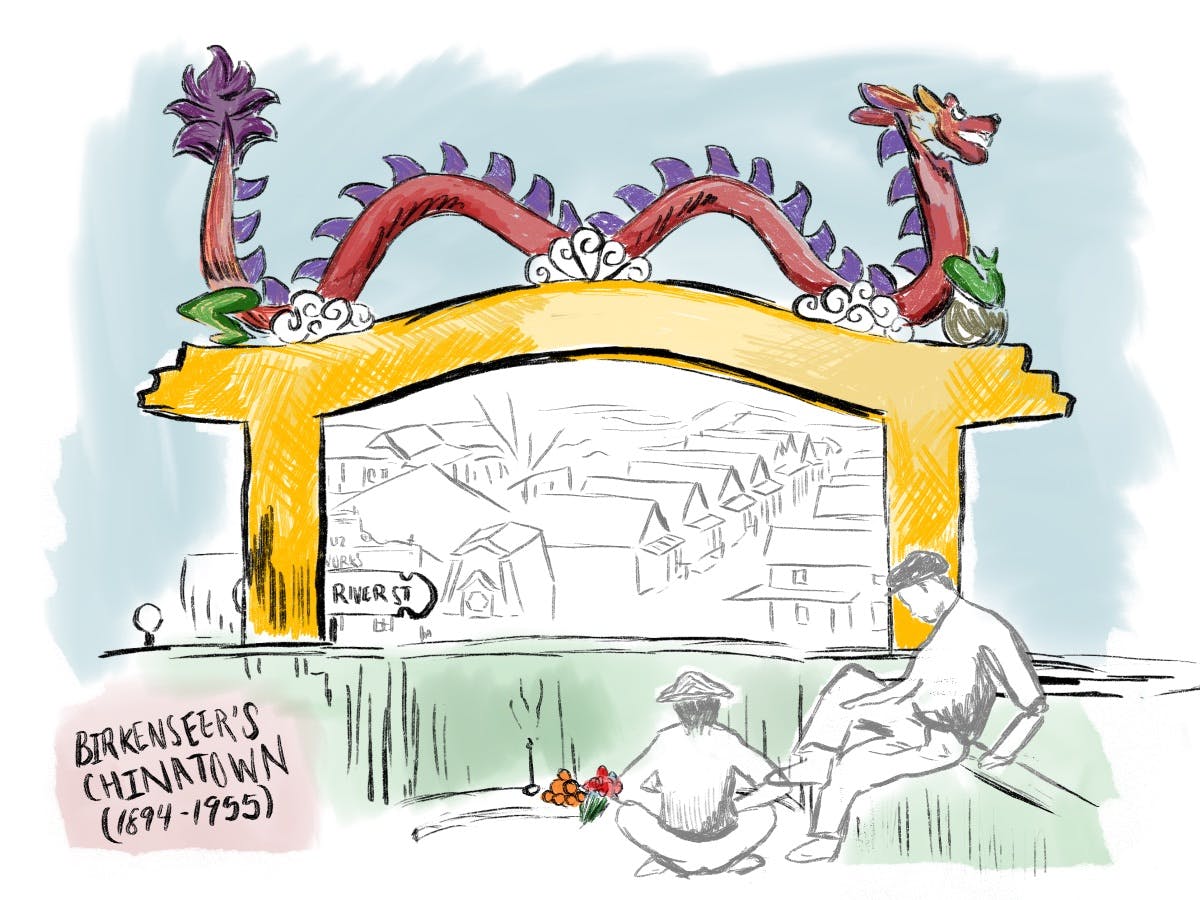After the fire, Chinatown was rebuilt in two places. One portion was built on property owned by Harriet Blackburn, and the other on the property of George Birkenseer. The Blackburn Chinatown housed the Chinese market gardens along the west side of Chestnut Street, just south of Laurel Street and right around where Depot Park is today.
But the gardens and the surrounding Chinatown were wiped out by Southern Pacific Railroad when the company turned the property into a trainyard in 1905.
So the people were forced to move, again.
Piece by piece, they disassembled the Blackburn joss house — or traditional Chinese temple — which served as a place of worship for the Chinese community in Santa Cruz. They rebuilt it on Front Street in the Birkenseer Chinatown, once again right along the San Lorenzo River.
And as the size of the river grew, Chinatown shrunk.
By the end of February 1940, the high waters of the river started to reach the floorboards of the joss house. With nowhere else to go but up, the quartet of elderly Chinese men living there moved all of their belongings to the second floor. Hesitantly, they left the joss house through the second story, onto boats and then onto firm ground. The old joss house was demolished a decade later.
By the 1950s, a mix of historical factors led to population decline in Santa Cruz’s Chinatown: anti-Chinese racism and hostility drove families away from the area and into the much larger Chinatown in San Francisco, leaving Santa Cruz’s with an increasingly elderly population.
So when the historic ‘Christmas flood of 1955’ decimated the entire riverbank, Chinatown could move no further. There was no vibrant and thriving community left to survive its displacement. With that, the last families in Santa Cruz’s Chinatown simply moved elsewhere, either in Santa Cruz or even further over the hill.




